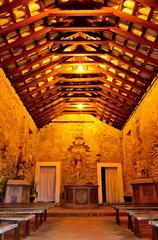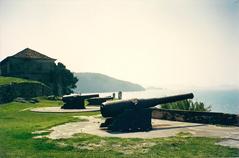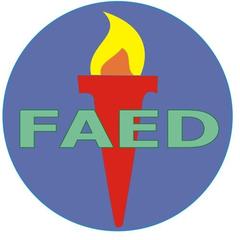Museu do Homem do Sambaqui: Visiting Hours, Tickets, and Comprehensive Guide to Florianópolis Historical Sites
Date: 04/07/2025
Introduction: Preserving the Origins of Florianópolis
The Museu do Homem do Sambaqui in Florianópolis, Brazil, stands as a crucial guardian of the region’s earliest human history. Anchored in the study of sambaquis—prehistoric shell mounds created by coastal hunter-gatherers over 8,000 years ago—the museum unveils the lives, rituals, and environment of Brazil’s first inhabitants. These ancient mounds, rich in burials, artifacts, and ecological remnants, highlight complex societies that flourished long before European colonization. Established in 1964 through the dedication of Jesuit priest and archaeologist Padre João Alfredo Rohr, the museum today holds one of Brazil’s largest archaeological collections, with more than 350,000 pieces, including human skeletal remains, stone tools, ceramics, and ancient fossils.
Beyond its exhibitions, the museum is a center for research, education, and community engagement, fostering public awareness and safeguarding this irreplaceable legacy. Its prime location in Florianópolis’ historic center makes it a pivotal site for anyone exploring the city’s cultural roots. This guide delivers detailed visitor information, including history, tickets, accessibility, and practical tips, while highlighting the museum’s ongoing impact on archaeology and heritage in Brazil (NDMais, Visite Floripa, Colégio Catarinense).
Table of Contents
- Origins of the Sambaqui Cultures
- Archaeological Discoveries and Padre João Alfredo Rohr
- The Museum’s Collection: Highlights and Significance
- The Role of Sambaquis in Santa Catarina’s History
- Preservation, Research, and Community Engagement
- Visiting Hours, Tickets, and Accessibility
- Guided Tours and Educational Programs
- Facilities and Visitor Amenities
- Practical Tips and FAQs
- Nearby Historical Attractions
- Plan Your Visit: Final Recommendations
- References
Origins of the Sambaqui Cultures
Sambaquis, meaning “mound of shells” in Tupi, are massive prehistoric constructions—sometimes exceeding 30 meters in height—formed over millennia by the accumulation of shells, animal bones, and human burials (NDMais). These ancient mounds are both refuse heaps and ceremonial monuments, providing an unparalleled archaeological record of the region’s earliest societies.
Archaeological studies indicate that the first humans settled the Santa Catarina coastline approximately 8,500 years ago as sea levels and temperatures rose at the end of the last Ice Age (Like Floripa). The sambaquis document evolving dietary habits, social structures, and burial rituals, with graves often containing ornaments and grave goods—evidence of complex belief systems and social differentiation.
Archaeological Discoveries and Padre João Alfredo Rohr
The museum owes its existence and much of its collection to the pioneering work of Padre João Alfredo Rohr. Beginning his investigations in the 1940s, Rohr identified and excavated over 400 archaeological sites throughout Santa Catarina (Academia.edu). His research not only expanded scientific understanding of sambaquis but also spearheaded preservation efforts at a time when these sites were threatened by urban development and lime extraction.
Rohr’s academic legacy continues through the museum’s commitment to conservation, research collaborations, and public education—ensuring that the material culture of Brazil’s earliest inhabitants is preserved for future generations.
The Museum’s Collection: Highlights and Significance
With over 350,000 artifacts (1,500 on display), the Museu do Homem do Sambaqui offers a compelling window into Brazil’s prehistoric past (NDMais). Key highlights include:
- Human skeletal remains: Some dating back 1,000–3,000 years, revealing information on burial practices, health, and physical traits (Floripa Trips).
- Stone tools and zoolites: Finely crafted animal sculptures and utilitarian implements, showcasing artistic and technological skills (WhichMuseum).
- Guarani pottery: Traces of later indigenous cultures and transitions in regional history.
- Fossils and natural history specimens: Fossils up to 225 million years old, linking human history to broader natural evolution.
- Numismatic and sacred art collections: Coins, banknotes, and religious artifacts that contextualize the region’s journey from prehistory to modern times.
The museum’s diverse holdings are crucial for understanding long-term human adaptation and cultural development in southern Brazil.
The Role of Sambaquis in Santa Catarina’s History
Santa Catarina is home to some of the world’s largest sambaquis, with more than 100 identified sites in Greater Florianópolis (NDMais). These mounds are not only archaeological treasures but also enduring symbols of the region’s deep-rooted past, providing invaluable evidence about ancient diets, social organization, and spirituality.
Preservation, Research, and Community Engagement
The museum is a hub for scientific research, public education, and community outreach. Projects like the “Projeto de Salvaguarda do Acervo Arqueológico” apply modern conservation techniques to preserve fragile artifacts (Academia.edu). Educational initiatives—often in partnership with local schools—emphasize heritage awareness and inspire stewardship among younger generations (Like Floripa). The museum also collaborates with academic institutions to advance archaeological research and disseminate new findings to the public.
Visiting Hours, Tickets, and Accessibility
- Address: Rua Esteves Júnior, 711, Centro, Florianópolis, SC, Brazil
- Opening Hours: Tuesday to Friday, 1:00 PM – 7:00 PM; Saturday, 10:00 AM – 2:00 PM; closed Sundays, Mondays, and public holidays (WhichMuseum).
- Admission: Free (donations appreciated to support preservation).
- Accessibility: The museum offers a street-level entrance; some exhibition areas may have limited wheelchair access. Contact the museum in advance for specific requirements. Restrooms are available on-site.
Guided Tours and Educational Programs
Guided tours are available for groups, schools, and by prior arrangement. Tours are primarily in Portuguese; English- or Spanish-speaking guides may be arranged with advance notice (Visite Floripa). The museum regularly hosts workshops and educational events focused on archaeology, indigenous history, and environmental themes.
Facilities and Visitor Amenities
- Restrooms: Available on-site, with limited adapted facilities.
- Café/Gift Shop: Not available, but the museum is centrally located near many dining and shopping options.
- Water: Bringing a reusable water bottle is recommended.
- Photography: Non-flash photography is generally permitted; check with staff for restrictions.
Practical Tips and Frequently Asked Questions (FAQs)
Essential Tips
- Plan ahead: Confirm current visiting hours and book guided tours in advance, especially for groups.
- Language: Most exhibition texts are in Portuguese; consider arranging a tour or using a translation app.
- Ideal visit duration: Allow 45–90 minutes for a thorough visit.
- Combine with other sites: The museum’s location makes it easy to include nearby attractions like Palácio Cruz e Sousa and Mercado Público in your itinerary.
FAQs
Q: What are the opening hours?
A: Tuesday to Friday, 1:00 PM – 7:00 PM; Saturday, 10:00 AM – 2:00 PM; closed Sundays and Mondays.
Q: Is there an admission fee?
A: Admission is free.
Q: Are guided tours available?
A: Yes, for groups and by arrangement; English/Spanish tours possible with advance notice.
Q: Is the museum accessible for people with disabilities?
A: Partial accessibility; contact the museum for details.
Q: Can I take photos inside?
A: Yes, non-flash photography is allowed.
Q: Do I need to book in advance?
A: Not for individuals, but groups should arrange tours ahead of time.
Nearby Historical Attractions
Enhance your visit by exploring these nearby Florianópolis landmarks:
- Palácio Cruz e Sousa: The city’s historical museum.
- Metropolitan Cathedral: Iconic colonial architecture.
- Mercado Público: A vibrant local market offering crafts and cuisine.
A suggested itinerary: enjoy a morning walking tour of the historic center, visit the museum midday, have lunch nearby, and continue to other cultural sites.
Plan Your Visit: Final Recommendations
The Museu do Homem do Sambaqui encapsulates the extraordinary story of Brazil’s prehistoric roots and the resilience of indigenous heritage. Its collections, educational programs, and central location make it a must-visit for anyone interested in archaeology, anthropology, or local history. For the latest updates, special exhibitions, and educational resources, consult the official museum website or trusted tourism portals.
Enhance your experience:
- Download the Audiala app for audio guides and real-time updates.
- Follow official social media channels for news and event announcements.
- Explore related articles for more top museums and historical sites in Florianópolis.
Tip: Incorporate images and interactive maps in your online research to visualize the museum’s collections. Use alt tags with keywords like “Museu do Homem do Sambaqui exhibits” and “Florianópolis archaeological museum” to discover more resources.
References
- Homens do Sambaqui: Quem foram os primeiros habitantes de Florianópolis?, NDMais (NDMais)
- Museu do Homem do Sambaqui - Visite Floripa (Visite Floripa)
- Salvaguarda do acervo arqueológico do Museu do Homem do Sambaqui Pe João Alfredo Rohr S J do Colégio Catarinense Florianópolis SC, Academia.edu (Academia.edu)
- Museu do Homem do Sambaqui - Colégio Catarinense (Colégio Catarinense)
- Museu do Homem do Sambaqui - WhichMuseum (WhichMuseum)






